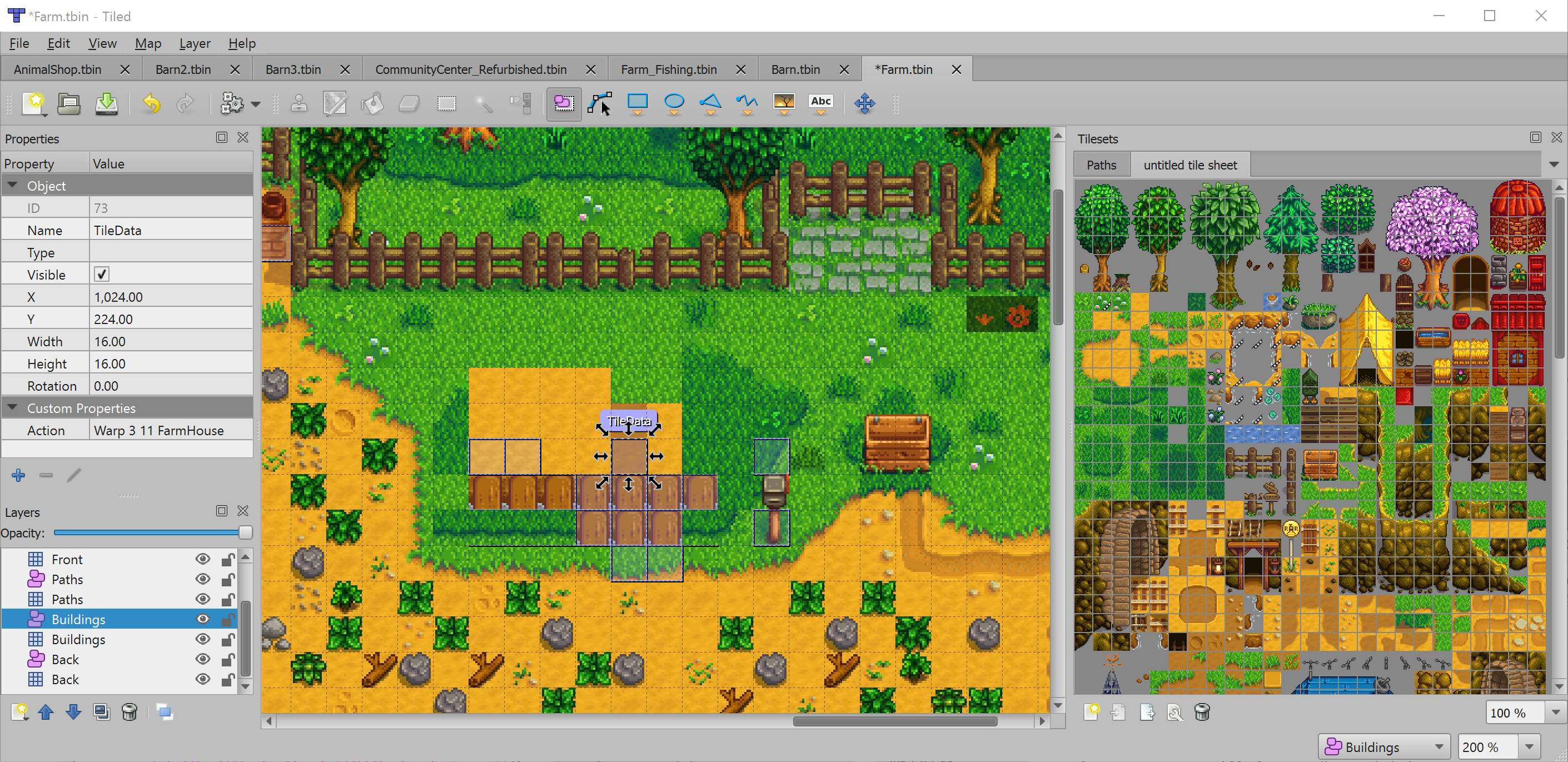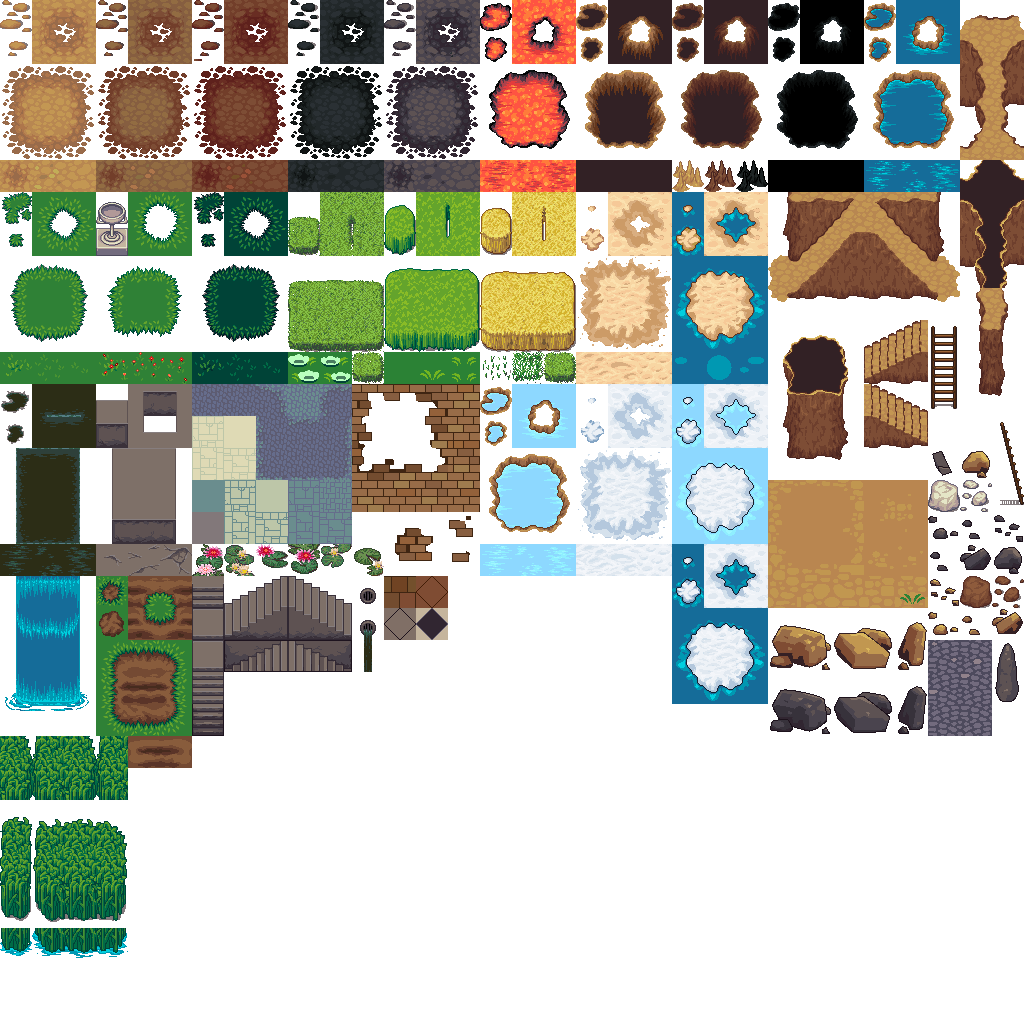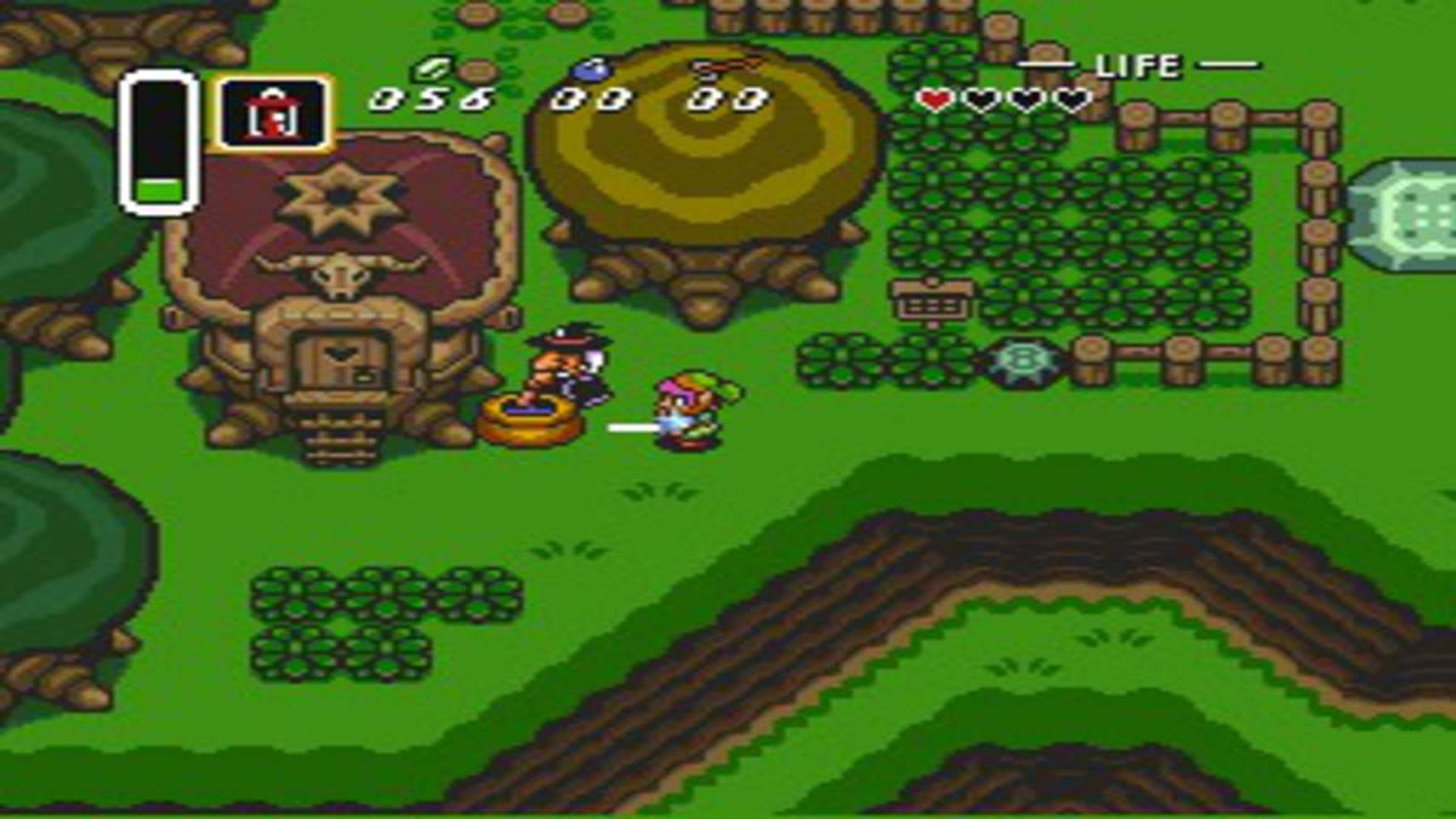Scene is basically the level or map object of the dsge engine. It will contain several different types of information that is need to make up a scene.
- Background Layers
- Foreground Layers
- Tilemap [background and foreground]
- Objectmap [background and foreground]
- Entities
- HUD Layer
- Misc GUI Layer (Menus and what not)
All of these components will make up what a scene is in the context of DSGE.
 The image is from a program called Tiled which an application that is optimized for dealing with tiled maps. How this will work in the engine is that it will load these images from an atlast texture that is 512x512 which is known as a Tileset.
Here is an example of a Tileset.
The image is from a program called Tiled which an application that is optimized for dealing with tiled maps. How this will work in the engine is that it will load these images from an atlast texture that is 512x512 which is known as a Tileset.
Here is an example of a Tileset.
 Now the cool idea I have for Tileset is that they will be stored into a Texture2DArray so this means I can have access to every tileset in the game to make some very interesting variation. Texture2DArrays allows for the use of xyz for texCoords instance of just xy. The z value is the kicker here because how a Texture2DArray works you can layer textures of the same is in an array like fasion so I can hyperthetically have over 1024 tilesets for one scene which is pretty cool. These reason why I'm choosing 512x512 is that it gives me room for a variety of different tiles and tile transitions. Down the line I will also what someway to animate tiles like for example water animation.
Now the cool idea I have for Tileset is that they will be stored into a Texture2DArray so this means I can have access to every tileset in the game to make some very interesting variation. Texture2DArrays allows for the use of xyz for texCoords instance of just xy. The z value is the kicker here because how a Texture2DArray works you can layer textures of the same is in an array like fasion so I can hyperthetically have over 1024 tilesets for one scene which is pretty cool. These reason why I'm choosing 512x512 is that it gives me room for a variety of different tiles and tile transitions. Down the line I will also what someway to animate tiles like for example water animation. If you look at the top of the image you'll see magic meater the amount of rupies that link has, his live bar, how many bombs and arrows he has, etc. Basically the hub layer is an information layer that is represented graphically. I might consider combining both the Misc GUI layer and the HUB together because to function very similarly. This issue can be viewed here
If you look at the top of the image you'll see magic meater the amount of rupies that link has, his live bar, how many bombs and arrows he has, etc. Basically the hub layer is an information layer that is represented graphically. I might consider combining both the Misc GUI layer and the HUB together because to function very similarly. This issue can be viewed here
This system will be the main system that the user of this software will be interactive with. It this system will be use to build up the Level, Map, or what I'm going to use is scene. Everything scene has a number of object called entities. These entities can have a number of prebuilt components that is a part of the engine and/or have a number of custom Behaviors which are created by the user programming in a simple scripting language aka Lua 5.4. In contract to an engine like Unity and Godot the Scene in my engine will have additional objects because I want the entites to be specifically used for creating game objects and not used in 1) Background/Foregrounds 2) Level Creation
The engine I'm creating is kind of taking the good stuff from RPG Maker VX and Unity 5 and smashing them together and making a coherent engine with some costs.
However, the advantages out way to disadvantages because This weird amalgamation of a scene graph will allow the creation of Background, Foreground, Tilemapping, and ObjectMapping(Basically tiles but its props). As well as dynamic entities. I want a system that is specifically designed to create Retro Style video game after all and the custom scene graph here will reflect it. I'll get more into once I get this into creating this system and I have a good design fore it.